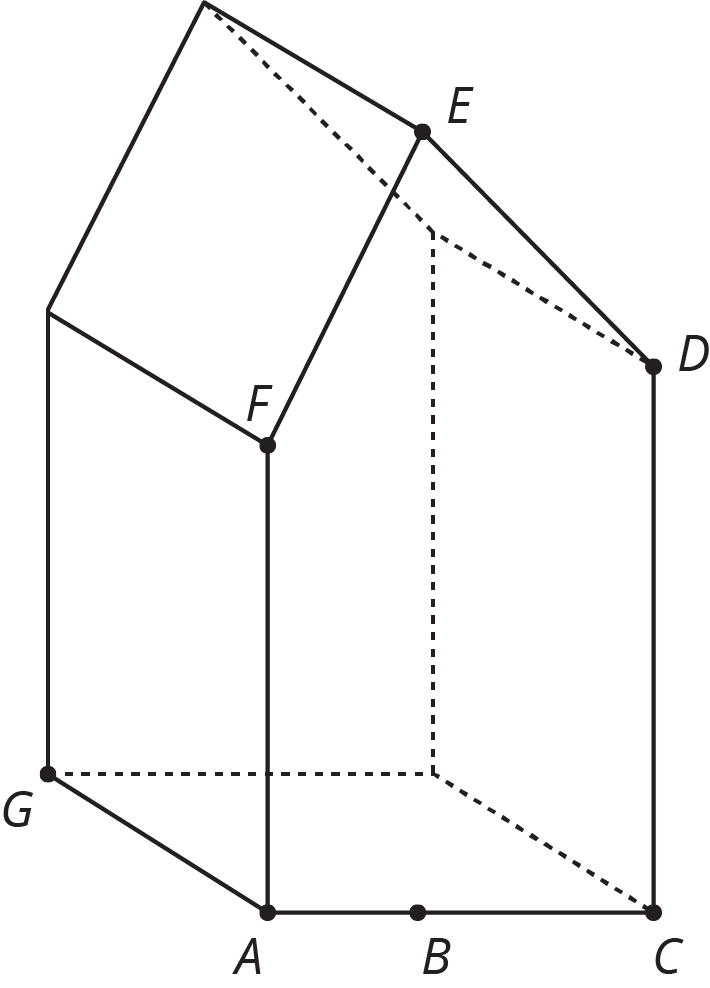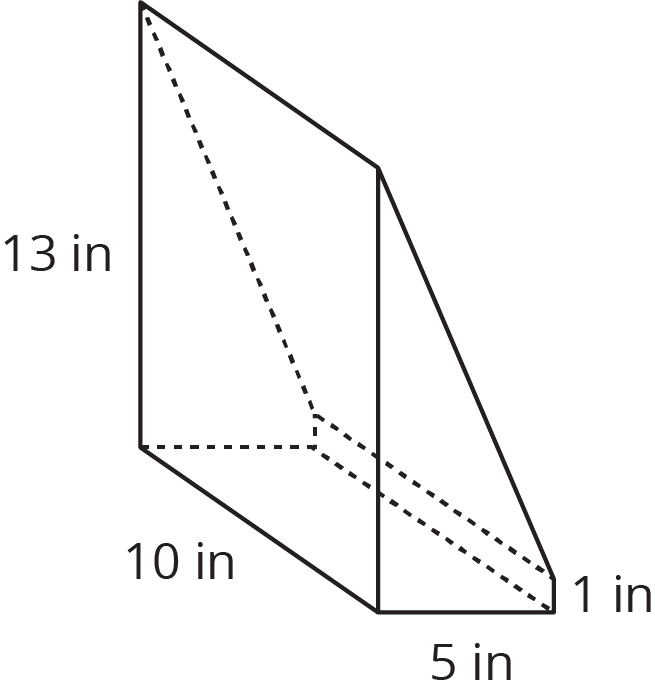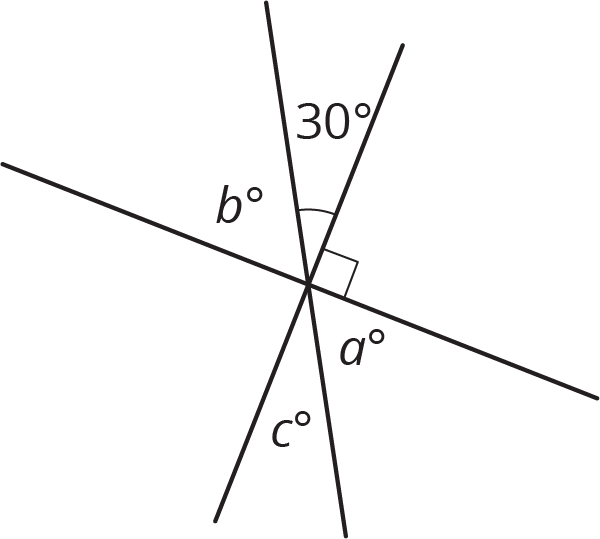Lesson 15
Decomposing Bases for Area
Let’s look at how some people use volume.
Problem 1
You find a crystal in the shape of a prism. Find the volume of the crystal.
The point \(B\) is directly underneath point \(E\), and the following lengths are known:
- From \(A\) to \(B\): 2 mm
- From \(B\) to \(C\): 3 mm
- From \(A\) to \(F\): 6 mm
- From \(B\) to \(E\): 10 mm
- From \(C\) to \(D\): 7 mm
- From \(A\) to \(G\): 4 mm

Problem 2
A rectangular prism with dimensions 5 inches by 13 inches by 10 inches was cut to leave a piece as shown in the image. What is the volume of this piece? What is the volume of the other piece not pictured?

Problem 3
A triangle has one side that is 7 cm long and another side that is 3 cm long.
-
Sketch this triangle and label your sketch with the given measures. (If you are stuck, try using a compass or cutting some straws to these two lengths.)
-
Draw one more triangle with these measures that is not identical to your first triangle.
- Explain how you can tell they are not identical.
Problem 4
Select all equations that represent a relationship between angles in the figure.

\(90-30=b\)
\(30+b=a+c\)
\(a+c+30+b=180\)
\(a=30\)
\(a=c=30\)
\(90+a+c=180\)